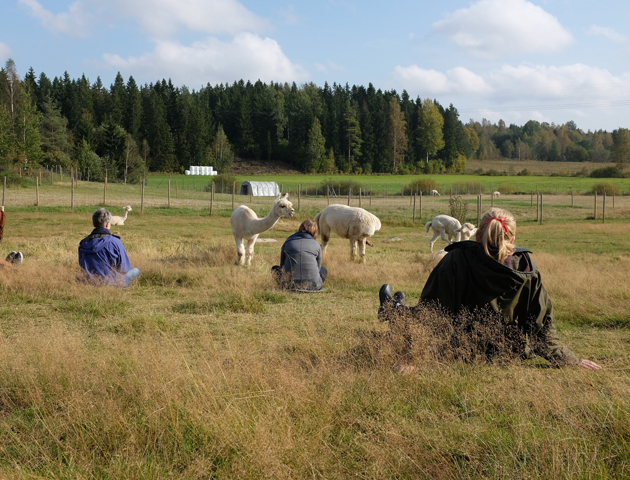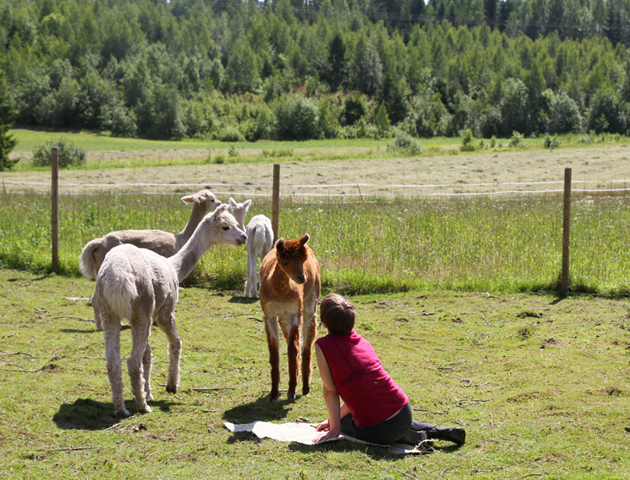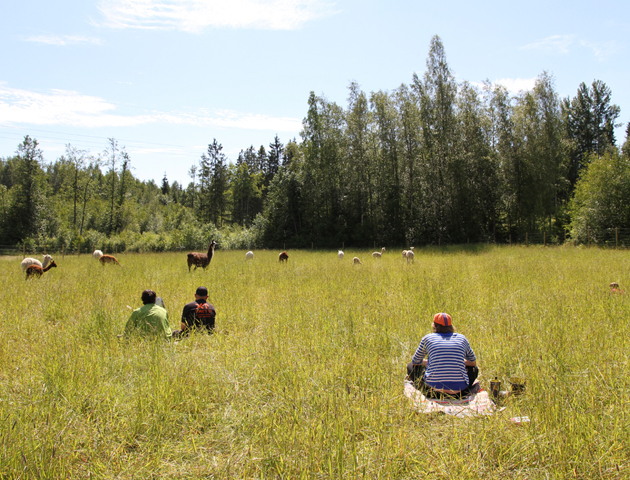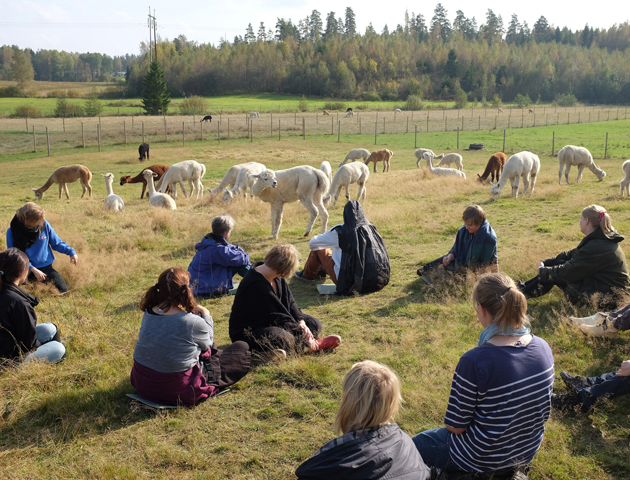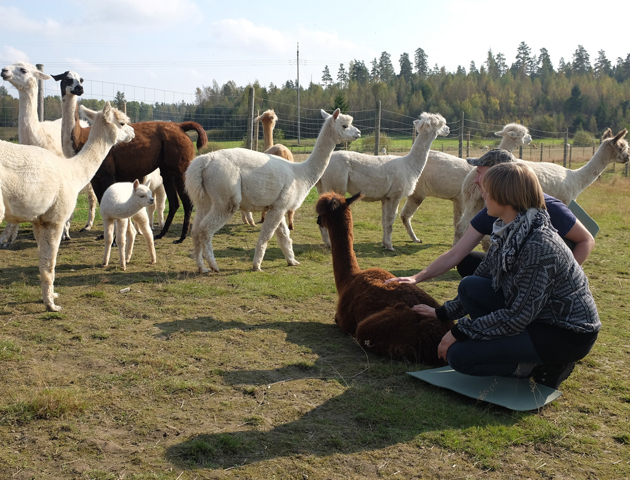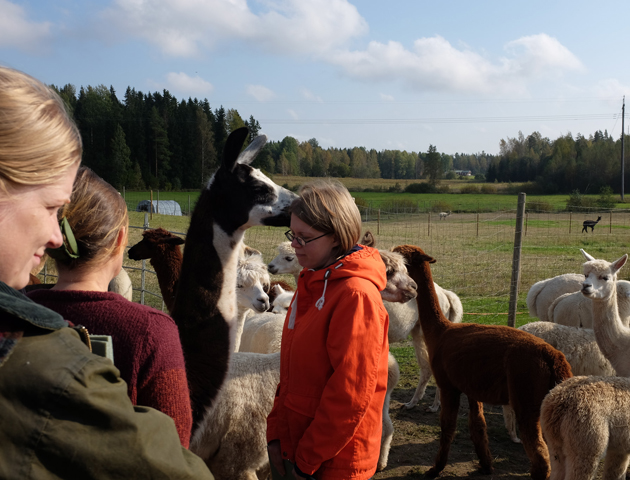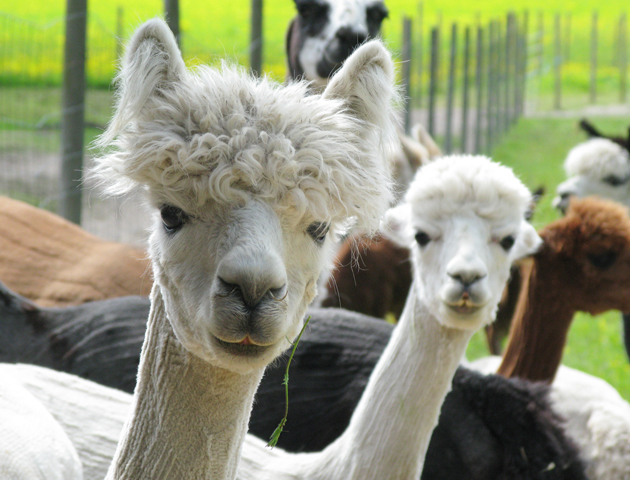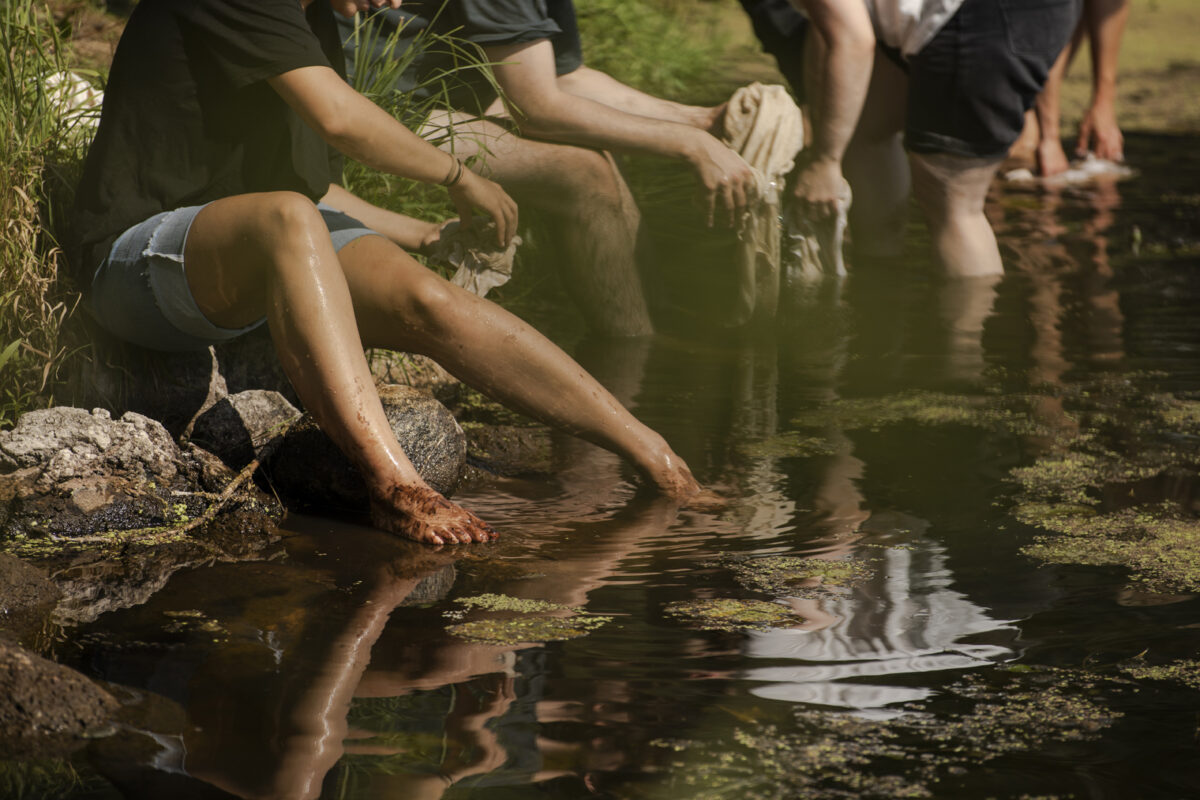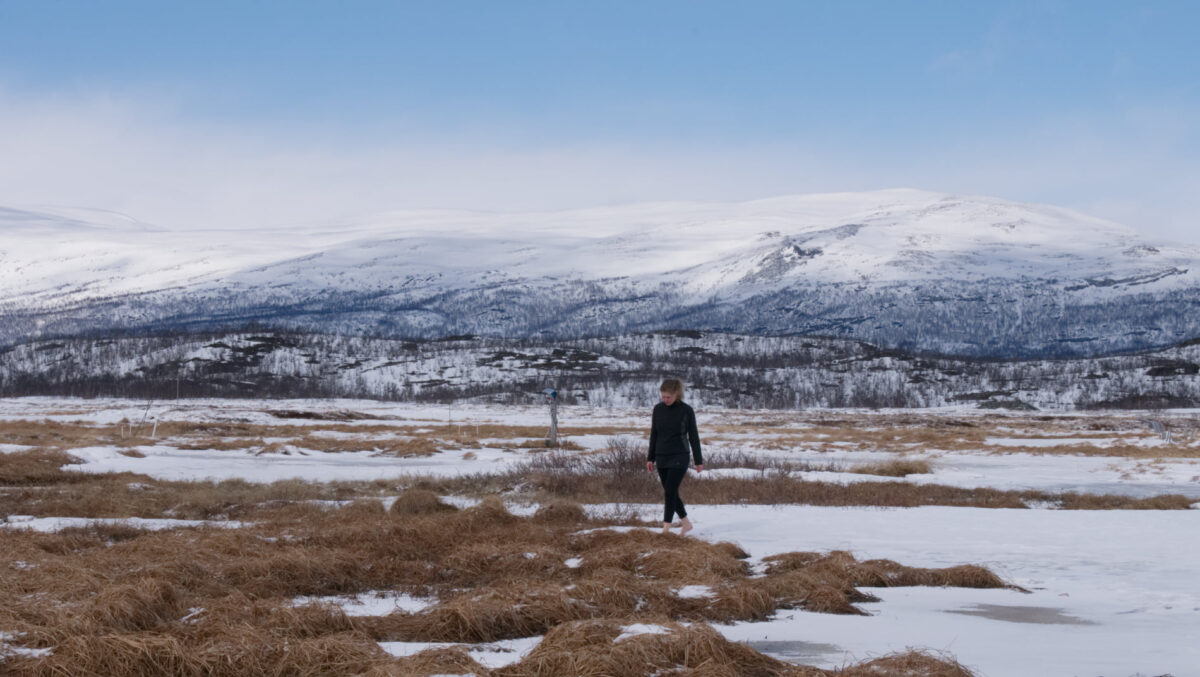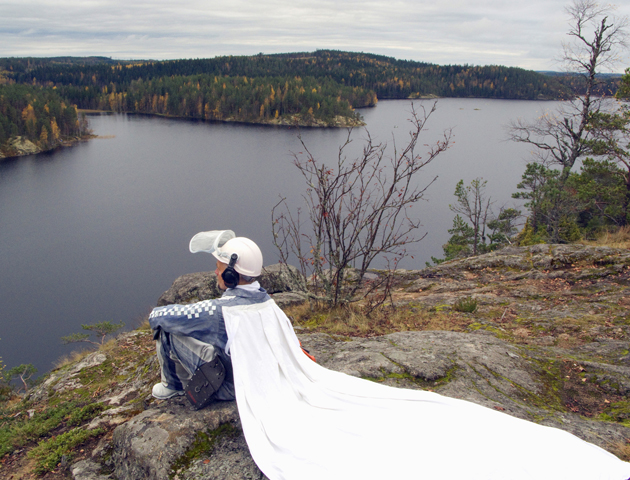Alpaca Oracle is a transdisciplinary inter-species communication project that aims to ask help and advice for human kind from other animals namely alpacas. Alpaca Oracle looks at the possibility of expanding human understanding on the present state and future prospects of life on Earth by practicing the skills of inter-species communication. The oracle sessions are arranged in terms of equality and harmony – the species-specific characters and the willingness to join the project of all the participants are taken into account. The project also explores how a herd functions and tries to reflect the findings in human population.
Alpaca Oracle is a collaboration in between an alpaca herd in Alpaca Fuente farm in Lohja, Finland and farmer Päivi Partanen, artist Mari Keski-Korsu and professional animal communicator Maiccu Kostiainen. In 2014-15, the project was organised in context of Frontiers in Retreat artist residency project and Pixelache.
The alpaca herd is firstly asked if they want to be part of Alpaca Oracle and help people with their challenges. People are then lead to the herd and a session of communication happens.
Please see images of the Alpaca Oracle 2014 here:
https://www.flickr.com/photos/artsufartsu/sets/72157644511858952
and images from Alpaca Oracle 2015 here:
https://www.flickr.com/search/?min_taken_date=1441062000&max_taken_date=1446422399&text=alpaca%20oracle&advanced=1
Interview about Alpaca Oracle for Pixelache Festival 2015 here:
http://livingspaces.pixelache.ac/posts/interview-with-mari-keski-korsu-alpaca-oracle
Read also about the installation and sound work (message from the alpacas) part of the project on this website at:
https://www.artsufartsu.net/alpaca-oracle-meadow/
Alpacas
Alpaca is an ancient animal originating from South American camelid. It is considered to be the first domestic animal before for example cow and sheep. It has stayed the same as it was 5000 – 7000 years ago. Due to alpacas fine fiber, it was called ‘the Gold of Andes’. Alpacas are a bit smaller than llamas and unlike llamas, they are not used to be beasts of burden. There are two breeds of alpacas: Suri and Huacaya. Alpaca Fuente’s herd are all Huacayas. The fiber of the alpacas are cut every spring, otherwise they would get too hot in the summer.
The first alpacas came to Finland in 2002 and now, there are about 1000 alpacas in the country.
And no, alpacas don’t spit all the time. They do it when irritated but some alpacas don’t do that ever even though they can.
What is animal communication and why do it?
We all know about species-specific gestures and behavior of different animals. But can this language reach out even further? This is what animal communicator Maiccu Kostianen works with. She is a translator in between human and other animals. Basically anyone has an ability to do this if we just focus and concentrate as well as empty our minds from “too much traffic”. The aim of the Alpaca Oracle is to experiment with this language and try to find new connections. As we know, human kind is facing several severe challenges we have caused ourselves: climate disruption (change), loss of diverse ecosystems, extinction of different species, pollution, overgrowth of human population and its consuming patterns (overuse of natural resources) etc. Other flora and fauna don’t cause such problems to themselves. If it wasn’t for humans, this planet would be probably doing just fine. Even though we try to find ways to solve the challenges mentioned, maybe it’s good to ask advice from those who already know and to try to do it in equal manner.
Roles and routines of an alpaca herd
Unlike human population, an alpaca herd is in balance with its’ environment. All the members of the herd have their specific roles and the herd has a daily routine. A pair doesn’t make a herd, there needs to be at least three individuals. If the herd is a bit bigger, like for example about 20 individuals like in Alpaca Fuente herd, alpacas are more calm and relaxed because they know there are more eyes to spot the danger. There are always guardians whose role is to guard the herd and inform about danger. In Alpaca Fuente herd, the guardians are two llamas: Pamela and Taika. If a human approaches the herd, the guardians will check carefully if they are good people or not. Pamela especially checks if your hair smells ok. The guardians are the lowest in the herd ranking.
There is on babysitter in the herd that takes care of the calfs when other adults have something more important to do. Usually the babysitter is a young female alpaca that hasn’t got any children of her own, yet. If there is a predator close by, all the calfs are collected to the centre of the herd and the adults surround them in a circle to protect them.
The lowest in the herd hierarchy are the old, weak or sick individuals. Usually, the alpacas try to hide if they have some physical issue. The leader of Alpaca Fuente herd is Isabel.
Alpacas have a daily routine that all the herd members practice. They gaze, pasture, sleep at the same time. In order to make sure that there is enough food for the future, they move a lot and leave parts of the fields to grow.
Alpaca Oracle teaser from mkk on Vimeo.
